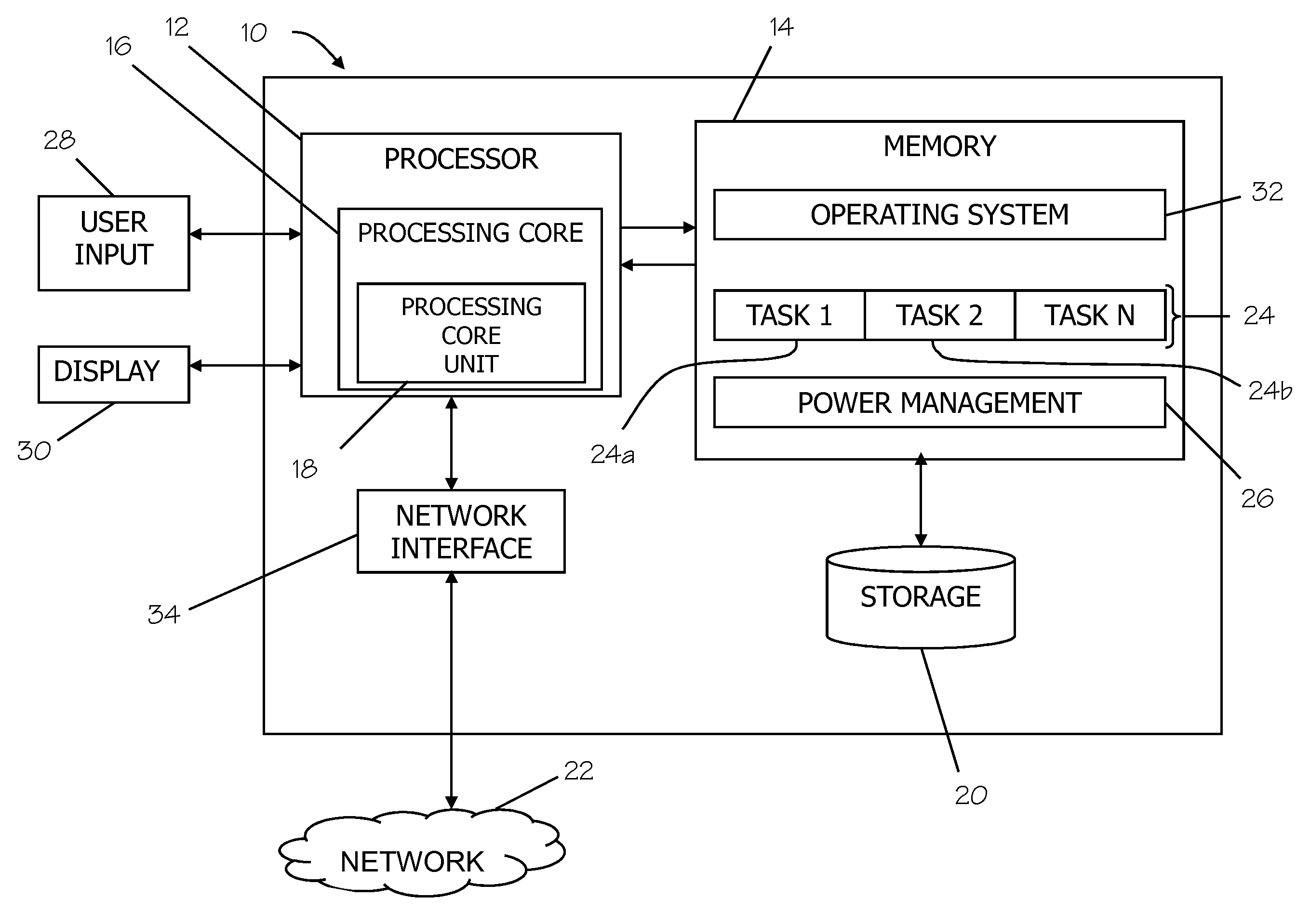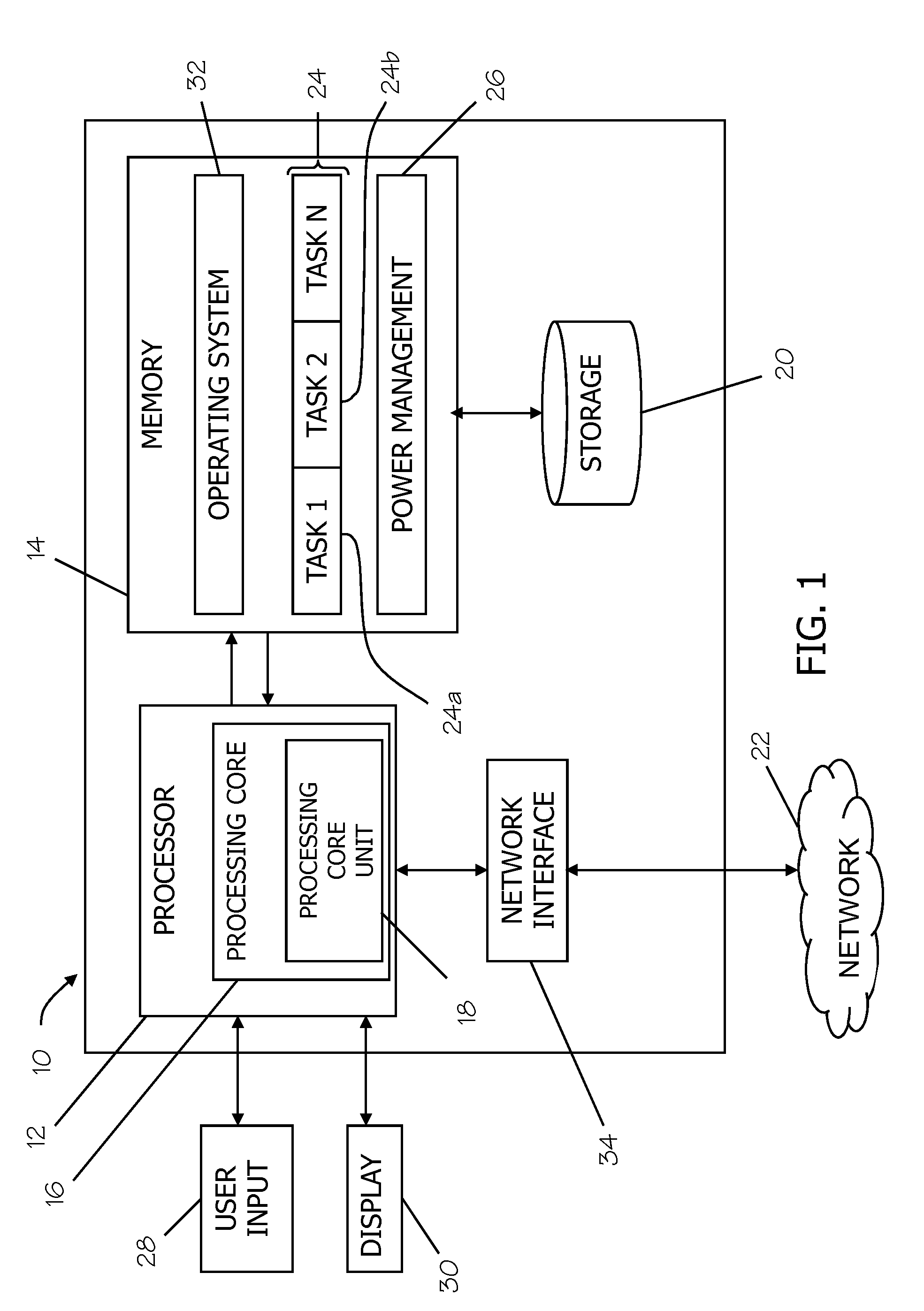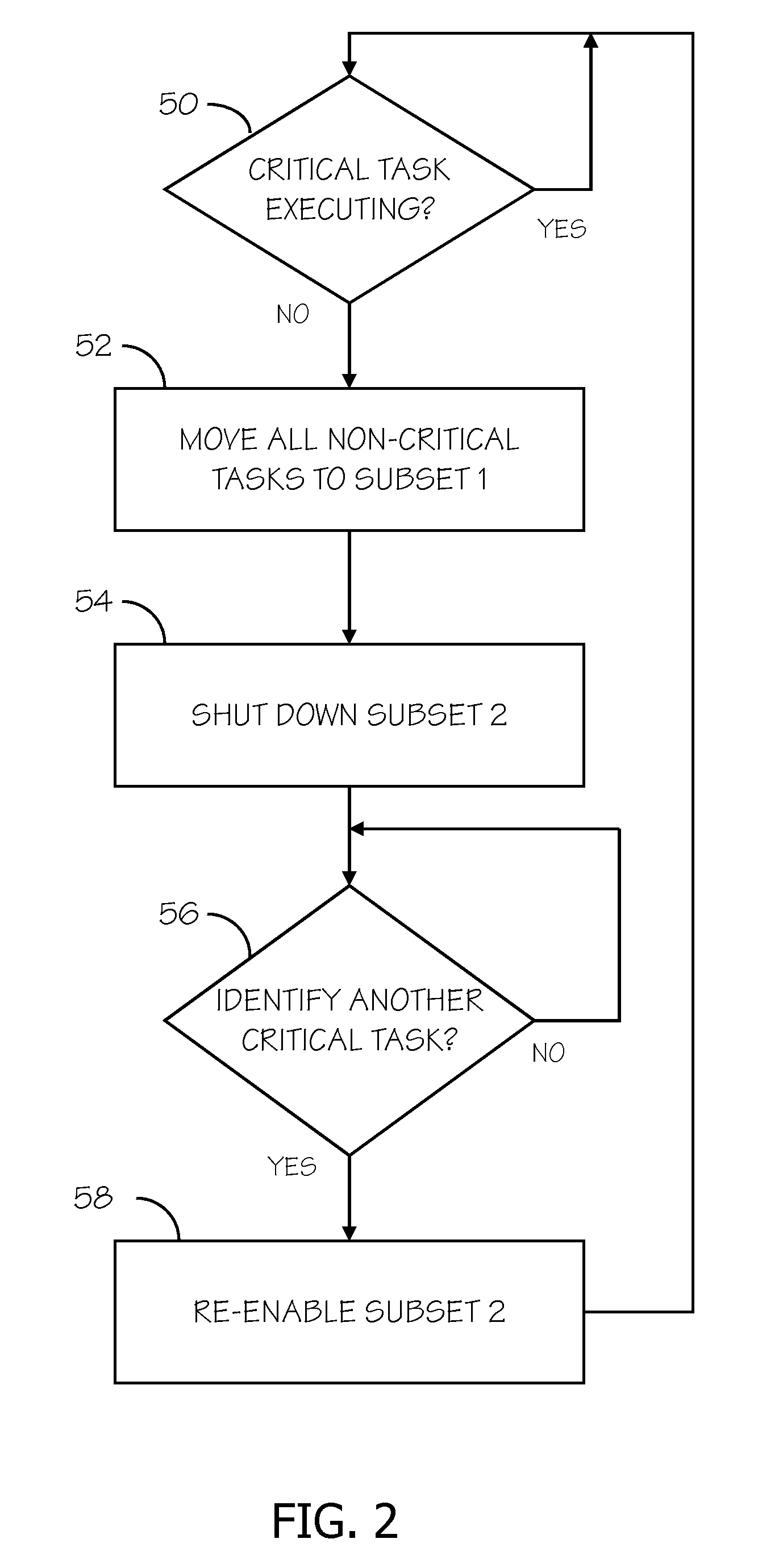Computer System Power Management Based on Task Criticality
- Summary
- Abstract
- Description
- Claims
- Application Information
AI Technical Summary
Benefits of technology
Problems solved by technology
Method used
Image
Examples
Embodiment Construction
[0021]Embodiments of the invention manage power consumption of a computer system based on a criticality associated with tasks executing in the system. The criticality of a task executing in the system controls a degree with which performance of the task may be degraded in order to reduce power consumption in the system. Tasks executing in the system may be processes, jobs, or threads. A system may use the criticality of tasks to determine whether portions of a system can enter a reduced power state and / or to schedule work to optimize power consumption. For example, in some embodiments, non-critical tasks may be scheduled to one portion of a system to allow for other, unused portions of the system to be configured in a low power state to reduce overall system power. Alternatively, in other embodiments, critical tasks may be scheduled to one portion of the system, and non-critical tasks may be scheduled to another portion of the system running at a lower power level to reduce overall ...
PUM
 Login to View More
Login to View More Abstract
Description
Claims
Application Information
 Login to View More
Login to View More - R&D
- Intellectual Property
- Life Sciences
- Materials
- Tech Scout
- Unparalleled Data Quality
- Higher Quality Content
- 60% Fewer Hallucinations
Browse by: Latest US Patents, China's latest patents, Technical Efficacy Thesaurus, Application Domain, Technology Topic, Popular Technical Reports.
© 2025 PatSnap. All rights reserved.Legal|Privacy policy|Modern Slavery Act Transparency Statement|Sitemap|About US| Contact US: help@patsnap.com



